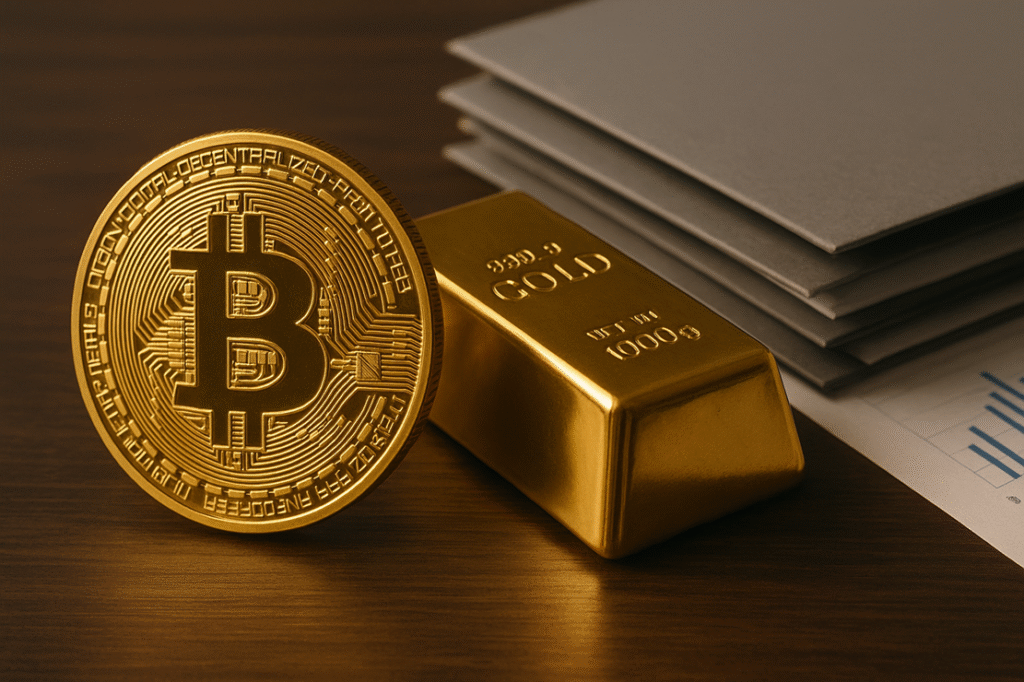In the fast-evolving financial landscape, cryptocurrencies continue to reshape the way we perceive assets and investments. Among these digital assets, Bitcoin has emerged as a formidable player, raising crucial questions about its future role in global finance. As traditional institutions closely monitor Bitcoin’s development, predictions are being made about its potential to coexist with gold in central bank reserves. With benefits such as diversification and inflation hedging, could Bitcoin soon become a mainstay in financial portfolios across the globe?
The Future of Bitcoin and Gold in Central Bank Reserves
Bitcoin’s Journey Toward Reserve Asset Status
Recent research from Deutsche Bank’s Research Institute suggests that Bitcoin could potentially share the spotlight with gold in central bank reserves by 2030, provided adoption trends and market dynamics continue on their current trajectories. Analysts Marion Laboure and Camilla Siazon argue for the complementary nature of Bitcoin and gold, envisioning a future where these two assets serve as strategic hedges rather than competing for a single position in reserves.
Gold has long been valued for its stability and defensive prowess, qualities that have been reinforced by recent geopolitical tensions and fluctuating monetary policies. This year, gold prices hit unprecedented highs, reaffirming its status as a reliable safe-haven asset. Parallel to this, Bitcoin has also been gaining ground, maintaining elevated price levels and demonstrating signs of becoming a macro hedge. Despite its current shortcomings in terms of trust and transparency, Bitcoin’s evolution mirrors that of gold’s journey to becoming a recognized reserve asset.
Central to this transformation is the concept of volatility. While Bitcoin is still maturing as a reserve asset, analysts observe a decrease in its volatility, particularly noticeable in August when its 30-day volatility dropped to 23%, even amidst record price highs. This suggests a potential decoupling of Bitcoin’s price from its volatility, a key characteristic for its acceptance as a reserve asset. Regulatory clarity, driven by US initiatives, the EU’s MiCA framework, and the UK’s cryptocurrency roadmap, is anticipated to enhance liquidity and stabilize volatility further, paving the way for Bitcoin’s broader acceptance.
Bitcoin and the US Dollar: Coexistence, Not Replacement
Despite Bitcoin’s growing prominence, the report remains cautious about its potential to unseat the US dollar as the dominant reserve currency. Historical precedents illustrate how governments have managed gold’s influence to maintain the dollar’s primacy, and it is likely that similar actions will be taken with Bitcoin to protect currency sovereignty. Consequently, while Bitcoin may find a place in central bank reserves, it is unlikely to replace the dollar at the core of the global financial system.
The appeal of Bitcoin lies in its diversification potential. Over the last decade, it has maintained low or near-zero correlations with traditional assets, making it an attractive option for portfolio diversification. Unlike gold, which displays positive correlations with interest rate markets and certain equities, Bitcoin’s unique correlation profile with different asset classes underlines its complementary role in reserve allocation.
Could Emerging Markets Lead Bitcoin Adoption?
According to Deutsche Bank, emerging markets may lead the charge in adopting Bitcoin due to their unique economic challenges, such as capital controls and currency instability. Countries like Argentina, Egypt, and Nigeria exemplify regions where Bitcoin could serve as a valuable alternative to unstable local currencies. For Bitcoin to be accepted broadly, key elements such as regulatory harmonization, increased transaction volumes, and improved liquidity must continue to develop, ultimately reducing volatility and building trust.
While Bitcoin and gold are viewed as complementary to central bank portfolios rather than direct substitutes, they both offer distinctive advantages like low correlations with other asset classes and scarcity. Their roles as hedges against inflation and geopolitical risks further underscore their potential value within diversified reserve portfolios. As central banks continue to prioritize the dollar’s centrality, the gradual inclusion of assets like Bitcoin and gold represents a strategic broadening of reserve asset options.
FAQs
Is Bitcoin a viable long-term investment?
Bitcoin’s long-term viability as an investment depends on a variety of factors, including its continued adoption, regulatory developments, and market dynamics. While it offers potential as a hedge against inflation and a diversification tool, investors should conduct thorough research and consider the cryptocurrency’s inherent volatility.
How does Bitcoin’s correlation with traditional assets influence its role as a reserve asset?
Bitcoin’s low correlation with traditional assets like equities and bonds makes it a potentially valuable diversification tool for portfolios. This unique correlation profile enhances its appeal as a reserve asset, particularly for central banks looking to balance different risk factors.
What role do regulatory developments play in Bitcoin’s adoption as a reserve asset?
Regulatory clarity is crucial for Bitcoin’s wider acceptance as a reserve asset. Clear regulations help stabilize the market, improve liquidity, and reduce volatility, which are essential conditions for its adoption by institutional investors and central banks.
In conclusion, the evolving narrative surrounding Bitcoin and gold serves as a testament to the shifting dynamics in global finance. While there are challenges to overcome, the potential for Bitcoin to complement gold as a central bank reserve asset marks a significant milestone in its journey toward wider institutional acceptance.

